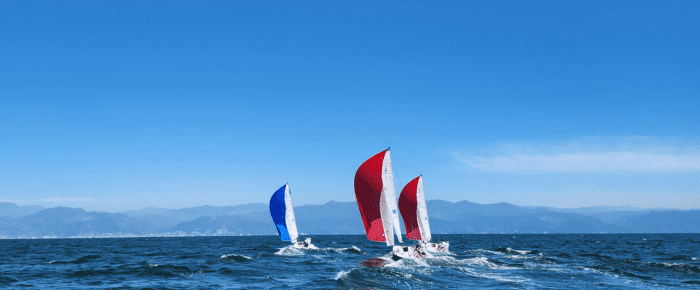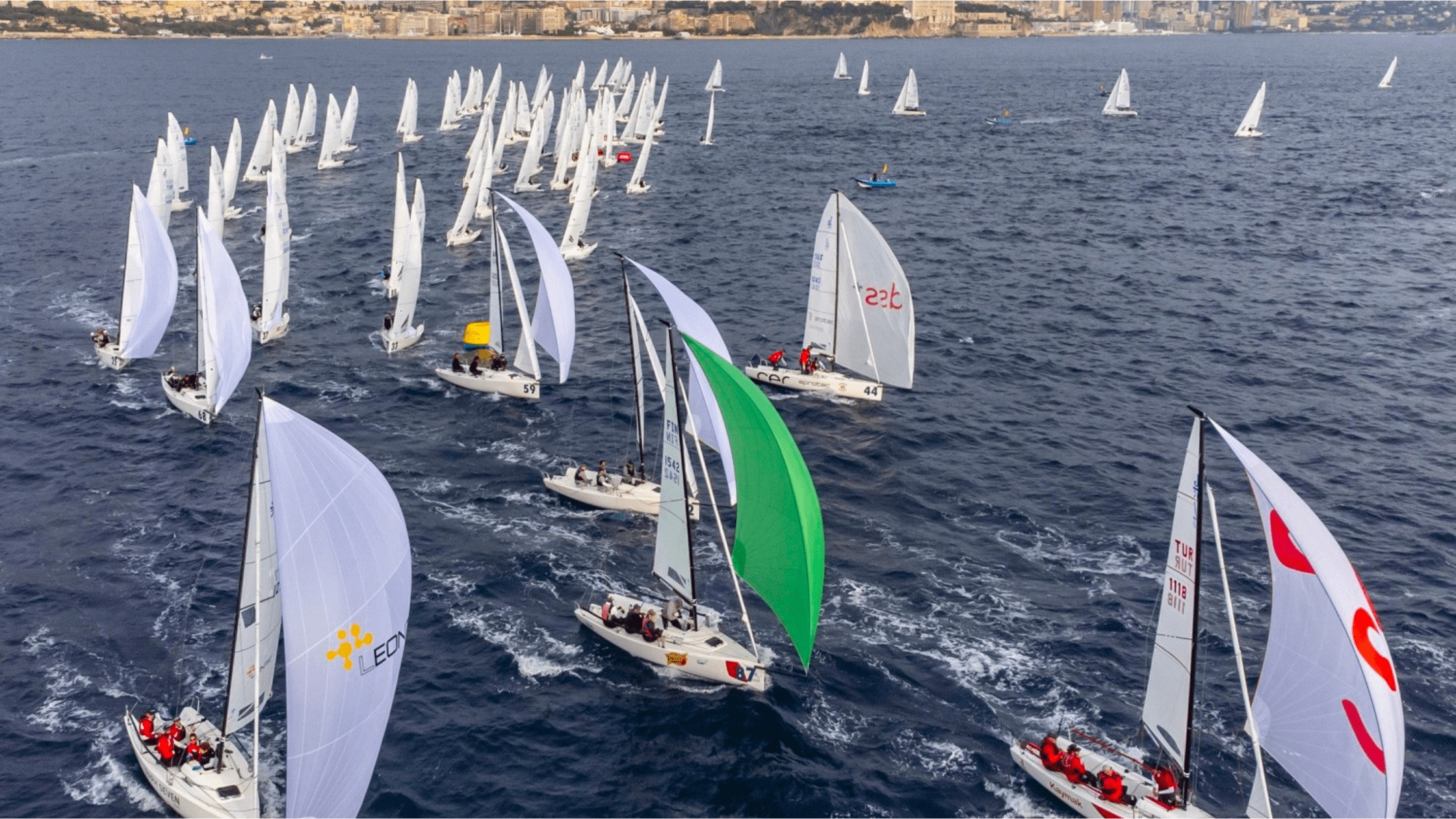Understanding the Science of Drag in Sailing
Sailing is a unique sport that combines the beauty of the ocean with the thrill of speed and the challenge of the elements. While sailing may seem like a tranquil activity, the elements can be unpredictable and challenging. One of the key factors in sailing is understanding the concept of drag, which can make or break a sailor’s performance. In this article, we will explore the science of drag in sailing, including what it is, how it affects your boat’s performance, and how you can use it to your advantage.
What is Drag?
Drag is the force that opposes the movement of an object through a fluid (in this case, water and air). In sailing, drag is created by the resistance of the water and air against the hull, keel, rudder, and sails of the boat. The amount of drag is affected by several factors, including the shape of the boat, surface roughness, the type of sails and rigging, and the speed and direction of the wind.
Factors that Affect Drag
- Water resistance is the most significant factor in sailing. When the hull of the boat moves through the water, the water creates resistance against the hull, causing drag. The shape and size of the hull, as well as the depth of the keel, can affect water resistance.
- Air resistance is also a factor in sailing, particularly when the boat is moving at high speeds. The sails and rigging of the boat create air resistance, which can slow down the boat and affect maneuverability.
- Surface roughness is another factor that affects drag. A smooth and clean hull will create less drag than a hull covered in barnacles or algae.
- The shape of the boat also affects drag. A streamlined, narrow boat will create less drag than a wider boat with a flatter hull.
Types of Drag and Performance Losses
There are four types of drag in sailing: form drag, skin friction drag, wave drag, and induced drag.
- Form drag is caused by the shape of the boat. A boat with a wider, flatter hull will create more form drag than a narrow, streamlined boat.
- Skin friction drag is caused by the friction between the water and the hull of the boat. A smooth, clean hull will create less skin friction drag than a hull covered in barnacles or algae.
- Wave drag is caused by the creation of waves as the boat moves through the water. The faster the boat moves, the larger the waves, and the more wave drag is created.
- Induced drag is caused by the production of lift by the sails. As the sails produce lift, they also create drag, which can slow down the boat.
The effect of Drag on performance
Drag can have a significant impact on the performance of a sailboat. Drag can slow down the boat, affect maneuverability, and impede the ability to sail upwind. Slowing down your boat is one of the most significant impacts of drag. The more drag your boat creates, the slower it will go, which can be frustrating when trying to maintain a competitive speed.
Losing maneuverability is another impact of drag. When drag is created, the boat becomes harder to steer, making it more challenging to navigate through the water. Impeding your ability to sail upwind is also a significant impact of drag. When sailing upwind, the boat must move against the wind, creating more drag, and slowing down the boat.

How can we reduce Drag?
Reducing drag is essential to improving the performance of a sailboat. Keeping your boat clean and smooth is one of the most critical ways to reduce drag. This is because a hull that remains smooth and free of any roughness will reduce skin friction drag.
We will address the different types of drag and how to manage them in the next paragraphs.
Form drag is important because it accounts for a significant portion of the total drag experienced by a sailboat. It is caused by the boat’s hull, sails and appendages’ shape and accounts for an important ammount of the total drag, making it one of the largest contributors to drag.
Reducing form drag is essential for increasing a sailboat’s speed and efficiency. Due to the nature of some of the sailing classes and one-design boats, form drag may be difficult to improve since most if not all boats will have the same exact shape and therefore impossible to optimize within the rules. What we can say to keep in mind is: If it is possible for sailors to have a sailboat with a streamlined hull, efficient keel, and optimized sail shape that will experience less form drag go for it. They will be able to sail faster and more efficiently through the water and maintain those speeds with less effort, making their sailing experience more enjoyable and efficient.
Skin Friction drag is an important factor in sailing as it contributes significantly to the total drag experienced by a sailboata sailboat It is caused by frictional resistance between the water and the surface of the ship, and represents around 30% of the total drag in situations of low induced drag making it, along with form drag, one of the main contributors to drag. in situations with low lift force.
Reducing friction drag is essential to increasing the speed and efficiency of a sailboat. A boat with a smooth, clean hull and sails made of soft or low-friction materials will experience less friction overall and will be able to navigate faster and more efficiently through the water. By reducing friction, sailers can reach higher speeds and maintain them with less effort, making their sailing experience better and more efficient.
Here are three examples of friction drag in navigation:
-
- A dirty hull or one that has imperfections or algae creates more friction resistance. The rough surface caused by these imperfections creates more drag, making it harder for the boat to move through the water and stopping easier than a clean, polished, blemish-free hull.
- A rough or pilling sail produces more friction than a smooth one, which can prevent them from generating the force required for high speeds, this consequently reduces the possible maximum speed of the boat.
- A misaligned or improperly tensioned rig can produce more frictional drag as the sails do not adjust and position as efficiently with the wind.
Wave resistance is an important factor in sailing, as it contributes significantly to the total drag experienced by a sailboat. It is caused by the resistance created by waves created by the boat and the water. This can account for up to 50% or more of the total resistance experienced by a sailboat. Reducing wave resistance is essential to increasing the speed and efficiency of a sailboat. Sailors can reduce wave resistance by minimizing the size of bow and transom waves, avoiding steep waves, optimizing sail trim, and using boats designed to jump from displacement into planing mode efficiently. By reducing wave resistance in its many forms, Sailors can increase boat speed and efficiency on the water.
Below we list three examples of wave drag in navigation:
-
- Bow Wave: When a sailboat moves through the water, it creates a bow wave that moves away from the bow of the boat. The bow wave creates a wave drag which in turn slows the boat.
-
- Transom Wave: The transom of a sailboat can also create a wave moving away from the stern of the boat. This transom wave, like the bow wave, creates a wave drag that slows the boat down.
-
- Steep waves: In high swell situations, the waves can be steep and create a lot of resistance and slow the boat as it moves through the water.
Next we’ll take a look at induced drag , which is one of the most important factors in sailing, as it can contribute significantly to the total drag experienced by a sailboat. Induced drag usually represents the majority of the total drag experienced by a sailboat, frequently being 50% or more of the total drag. Reducing induced drag is essential to increasing the speed and efficiency of a sailboat. Sailors can reduce induced drag by properly trimming sails, using efficient rudder and keel designs, reducing the size of sail tip vortices, and avoiding excessive heeling. By reducing induced drag.
Below we will show you five examples of induced drag in sailing:
-
- Improper sail trimming: If the sails are not trimmed correctly, it can cause the boat to experience excessive induced drag. If the sails are trimmed too much, the boat can experience excess force generated by the sails, causing induced drag in the sails and increased list of the boat. Both are undesirable.
-
- Sailtip vortices: Sails, due to their operation, can create wingtip vortices on their edges and these generate resistance. This type of drag is common on boats with low aspect ratio sails and it becomes crucial to reduce them through adjustment of the sails themselves if they are not properly designed to reduce these vortices.
- Rudder and keel design: May contribute to induced drag. A poorly designed rudder or keel can create unwanted turbulence from flow separation or wingtip vorticity, which can increase if poorly handled by the helmsman.
- High-speed sailing: When a sailboat is sailing at high speeds, it can experience excess induced drag. This is because the high speed creates a large difference in pressure between both sides of the sail, which creates additional unnecessary drag.
- Jib slot effect: The gap between the mainsail and jib can create a low-pressure area that contributes to induced drag. This is known as the jib slot effect. It can be highly-desirable or highly-unnecesary, depending on boat speed, sail size/shape and wind conditions.
Reducing induced drag is essential for increasing a sailboat’s speed and efficiency. As you now know, drag can be optimized by properly trimming the sails, using efficient rudder and keel designs, reducing the size of wingtip vortices, and avoiding excessive heel. This will then translate to an increase in the boat’s speed and efficiency through the water, making the sailing experience more enjoyable and efficient.

Long story short
Understanding the science of drag in sailing is essential for maximizing a sailboat’s speed and efficiency through the water.
The four types of drag in sailing are form drag, skin friction drag, wave drag, and induced drag. They all play a significant role in the total drag experienced by a sailboat.
By understanding the causes and effects of each type of drag, sailors can make adjustments to their boat’s design, sail trim, and sailing techniques to reduce drag and increase speed and efficiency. Whether cruising or racing, reducing drag is key to enjoying a more comfortable, efficient, and rewarding sailing experience.
Are you looking to take your sailing experience to the next level?
Let our expert team help you reduce drag and increase speed and efficiency on the water. With our proven techniques and customized solutions, we can help you improve your sailing and make the most of your time on the water.



